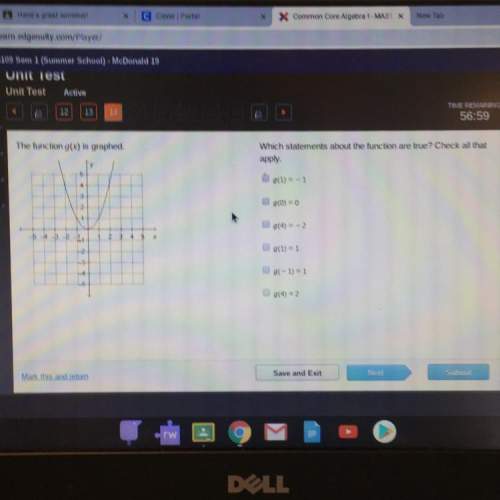
Mathematics, 19.12.2019 02:31 moodyshaliyah01
Suppose that (n, e) is an rsa encryption key, with n = pq, where p and q are large primes and gcd(e, (p − 1)(q − 1)) = 1. furthermore, suppose that d is an inverse of e modulo (p − 1)(q − 1). suppose that c ≡ me (mod pq). in the text we showed that rsa decryption, that is, the congruence cd ≡ m (mod pq) holds when gcd(m, pq) = 1. show that this decryption congruence also holds when gcd(m, pq) > 1. [hint: use congruences modulo p and modulo q and apply the chinese remainder theorem.]

Answers: 1


Another question on Mathematics

Mathematics, 22.06.2019 00:30
1. according to the internal revenue service, the mean tax refund for the year 2007 was $2,708. assume the standard deviation is $650 and that the amounts refunded follow a normal probability distribution. a. what percent of the refunds are more than $3,000? b. what percent of the refunds are more than $3,000 but less than $4,000? c. what percent of the refunds are less than $2,000?
Answers: 2

Mathematics, 22.06.2019 01:30
What is the domain of the of the exponential function shown below?
Answers: 2

Mathematics, 22.06.2019 02:00
Zack and tia played chess for 50 min they put the chessboard away at 11: 20 when did they start
Answers: 1

You know the right answer?
Suppose that (n, e) is an rsa encryption key, with n = pq, where p and q are large primes and gcd(e,...
Questions



History, 04.01.2020 22:31


Chemistry, 04.01.2020 22:31

Mathematics, 04.01.2020 22:31





Mathematics, 04.01.2020 22:31

Mathematics, 04.01.2020 22:31

Physics, 04.01.2020 22:31

Mathematics, 04.01.2020 22:31

Mathematics, 04.01.2020 22:31




Mathematics, 04.01.2020 22:31





